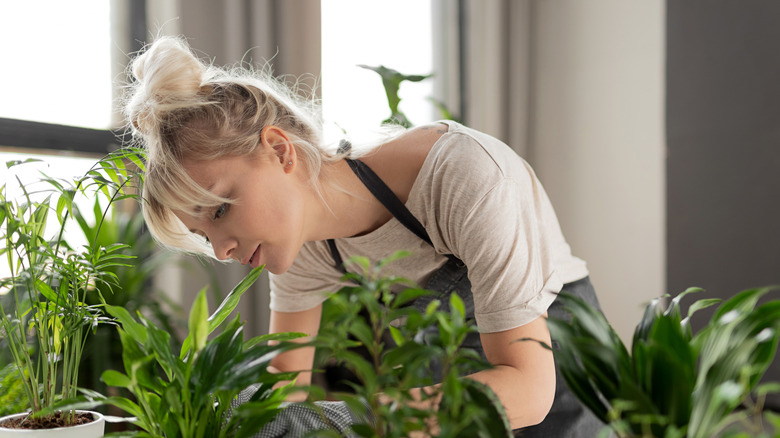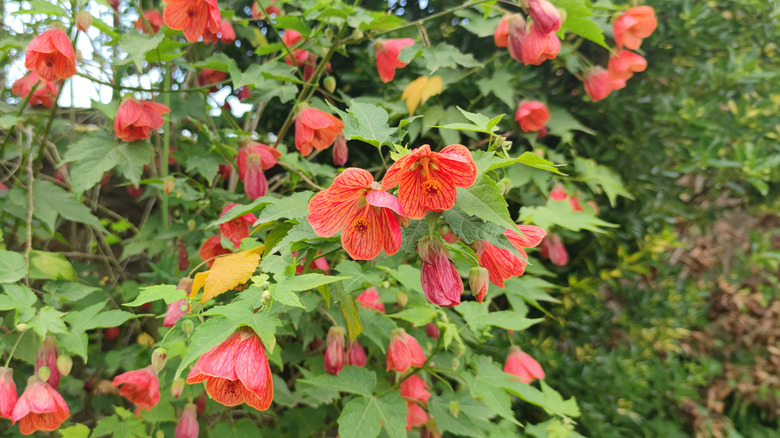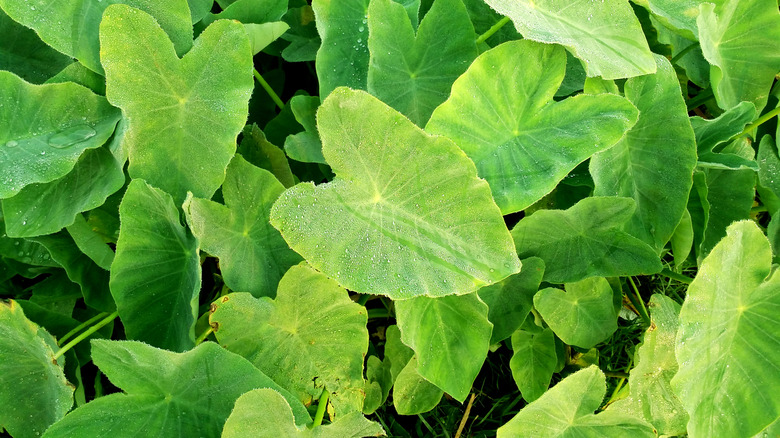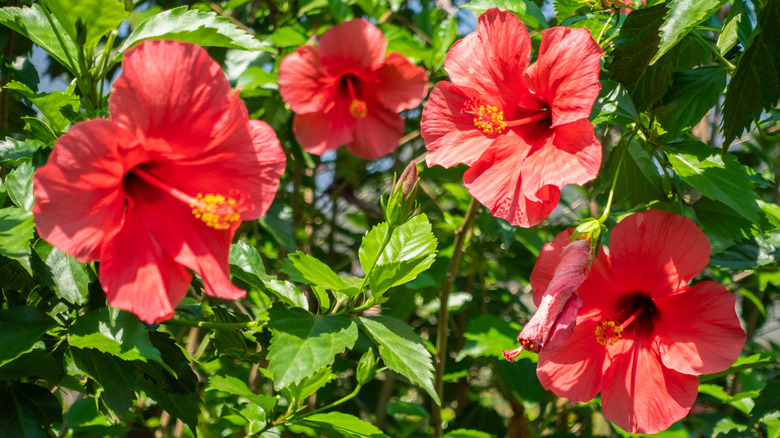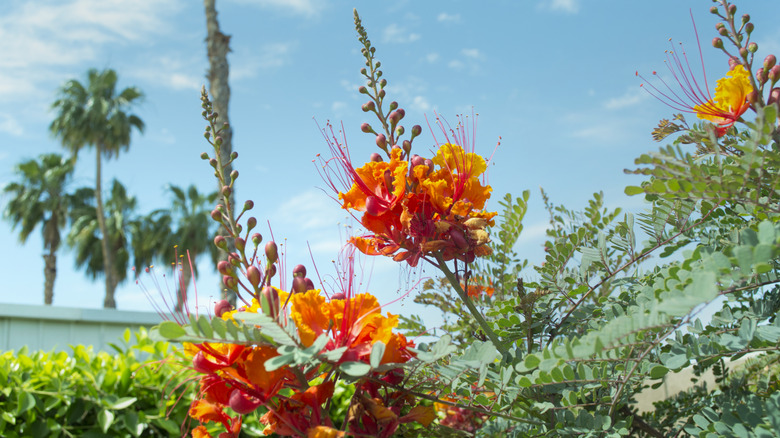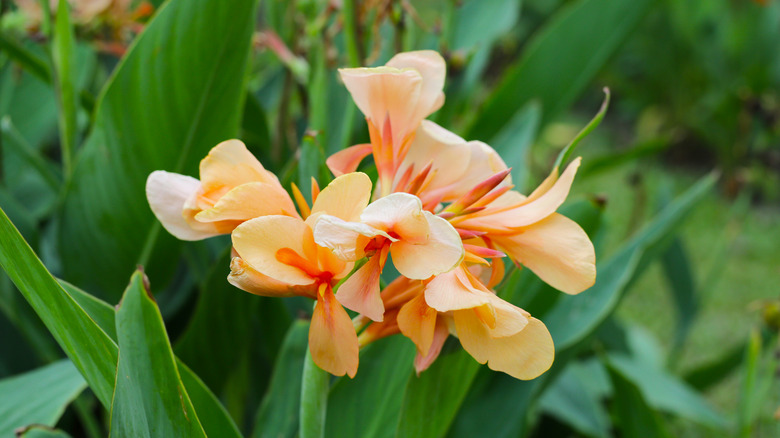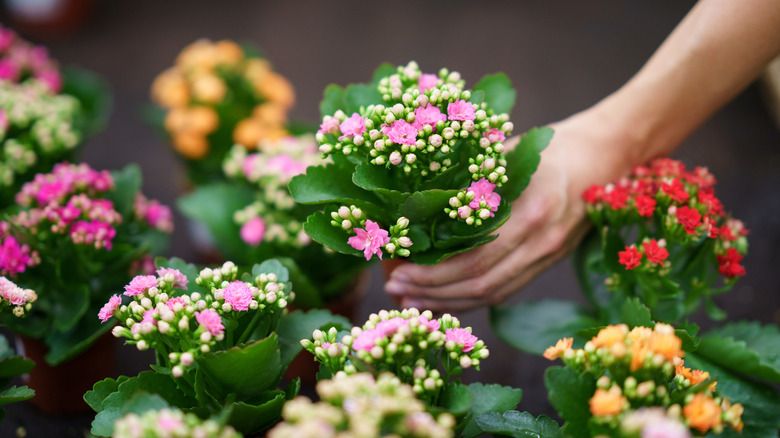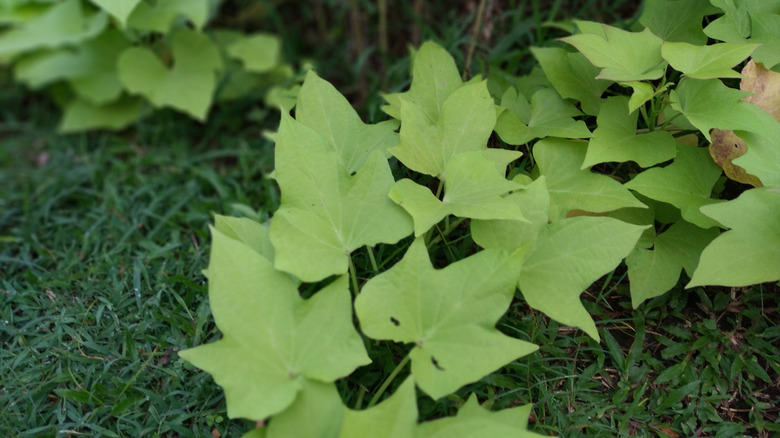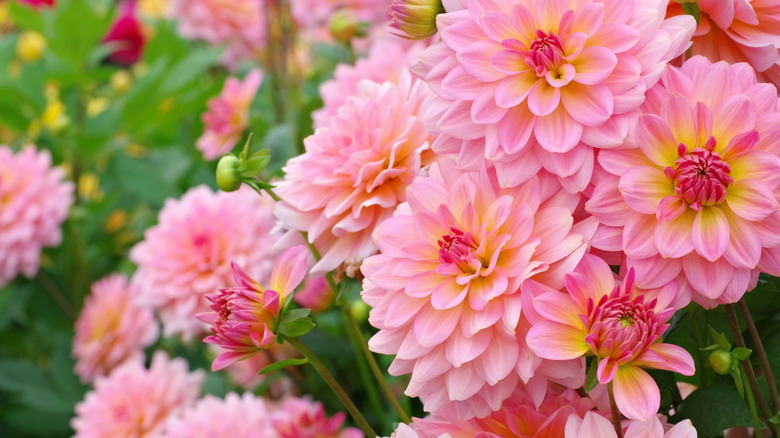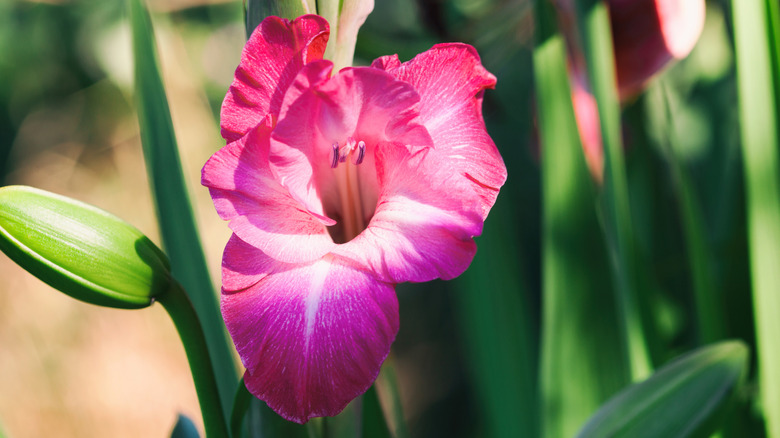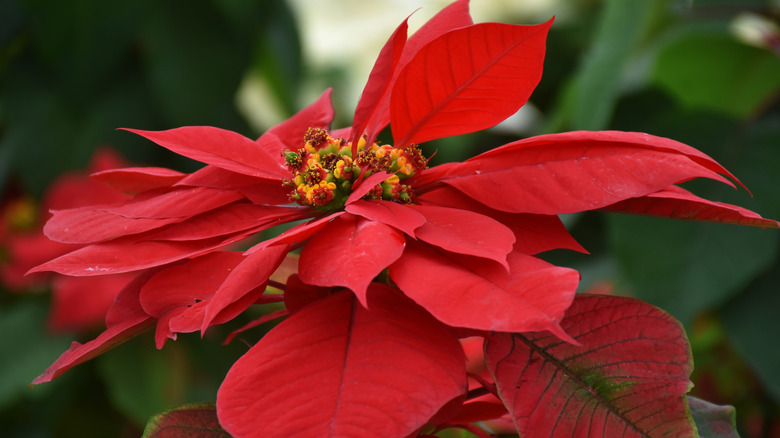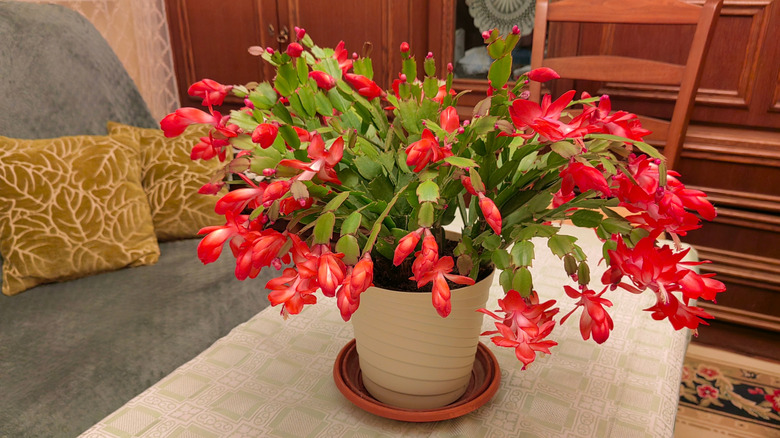11 Perennials To Bring Indoors Before Winter To Ensure A Vibrant Spring Garden
You probably know that, unlike annuals, perennial plants bring timeless beauty to the garden year after year. Unfortunately, this is only true if they can survive the winter. The good news is that by bringing your perennial plants indoors for the winter, you can ensure they will be strong and healthy come springtime. Overwintering your plants indoors lets you provide the temperature, sunlight, and water they need to thrive. When it's time to replant them in your garden, they'll be strong and ready for spring growth. Moving your plants indoors takes some extra effort, but it will be worth the work when you don't need to repurchase an entire garden of greenery after each chilly season.
There is a wide range of perennial plants that can benefit from overwintering indoors. Examples include tropical plants, like hibiscus and Mexican bird of paradise, that need year-round warmth and humidity, as well as the bulbs of plants like canna lilies and dahlias that will freeze if left in the ground. Bring these perennials indoors this winter if you want a full, vibrant garden next spring without the cost and hassle of repurchasing and replanting.
Flowering maple
The flowering maple (Abutilon) is not a tree, but a low-growing shrub named for the shape of its leaves. They can handle the colder months in USDA Hardiness Zones 9 to 10, but you can successfully overwinter these plants indoors in a chillier climate. You should keep them in a spot where they'll get full sun. You should also reduce their water, but it's important not to let the soil dry out completely between waterings. After the last frost has passed, you can move flowering maples back outside.
Elephant's ear
They are cold hardy in zones 8 through 11, but in cooler climates, elephant's ear (Colocasia esculenta) bulbs will freeze in the ground during the winter. Overwintering is essential if you want to enjoy these tender perennials all year. If their leaves start to yellow, night temperatures dip below 50 degrees Fahrenheit, or frost has occurred, it's time to bring them indoors. This will likely happen in late September to October. Bright but indirect light, warmth, and humidity and required for these plants to thrive indoors.
Tropical hibiscus
While some hibiscus varieties are hardy in zones 4 to 9, tropical hibiscus (Hibiscus rosa-sinensis) relies on temperatures above 50 degrees Fahrenheit year-round. To keep your hibiscus plant growing and thriving outside of zones 9 through 11, bring it indoors before the first fall frost. Over the winter, keep your tropical hibiscus plants' soil moist, and place them where they'll receive direct sunlight. Don't worry if your plant loses its leaves after you bring it indoors. This is normal, and the leaves will grow back soon.
Mexican bird of paradise
Mexican bird of paradise (Caesalpinia pulcherrima), also known as the pride of Barbados, produces stunning, fiery orange flowers and evergreen foliage. If you live in a zone below 9, bringing them indoors for the winter is essential to keeping them as perennials. Keep them in direct sunlight at temperatures between 50 and 60 degrees Fahrenheit. At this point, you can also reduce watering to about once per month.
Canna lily
Canna lilies, a group of perennial bulbs, are hardy in zones 6 to 10. If you live somewhere colder, you'll need to overwinter them once they go dormant. After the foliage dies back from the first hard frost, it's time to dig up the rhizomes. Store them over the winter in a dark place at 40 to 50 degrees Fahrenheit. You can leave them bare or pack them in slightly damp peat moss, vermiculite, sand, or wood shavings.
Kalanchoe
Kalanchoe are sun-loving, tender perennials that are generally hardy within zones 10 to 12. Some varieties, like Kalanchoe blossfeldiana, can tolerate light freezes and mild winters. However, for the healthiest plants and most vibrant gardens come spring, it's best to bring kalanchoe indoors for the winter. Keep these plants in direct sunlight in a room between 55 and 75 degrees Fahrenheit. You should also reduce their water without letting them dry out completely between waterings.
Sweet potato vine
Sweet potato vine (Ipomoea batatas), or ornamental sweet potato, is a vigorous ground cover that's only distantly related to the potato. Hardy in zones 9 to 11, it's typically grown as an annual, but with the right indoor care, you can keep it as a perennial. Before the first frost, cut back the top growth, leaving 4 to 6 inches of healthy foliage. Then, pot the roots and tubers in a peat-based mix. Sweet potato vine will do well in direct sunlight and with minimal water.
Dahlias
Don't let your gorgeous dahlias freeze in the ground this winter. In zones below 7, you should overwinter your dahlias indoors. Dig up the bulbs and dry them carefully. You can store them in vermiculite or dry sand at 35 to 45 degrees Fahrenheit. It's important that they stay dry, so check them periodically throughout the winter for signs of high humidity. If you find mushy bulbs, discard them and decrease the moisture. When there's no longer a chance of frost, you can replant them in your garden.
Gladiolus
Gladiolus is another genus of flowering bulbs that relies on a warm climate to thrive year-round. Gardeners living below zone 7 should plan to preserve their gladiolus bulbs indoors. When their foliage dies back after the first light frost of the season, dig them up. Wash and dry the bulbs, then place them in a warm and dry place to cure for about three weeks. The key to overwintering these bulbs is to keep them dry and cool, ideally between 35 and 45 degrees Fahrenheit. Pack the bulbs into a cardboard box, separated with sand, sawdust, coir, or vermiculite.
Poinsettias
Poinsettias (Euphorbia pulcherrima) are synonymous with the holiday season. While these red and green plants are stunning against the backdrop of a white winter, they're actually tropical plants. Once temperatures drop below 50 degrees Fahrenheit, it's time to bring your poinsettias indoors. Poinsettias are unique in that they need 12 hours of complete darkness during winter. Many people choose to cover them or keep them in a closet, then bring the plant out and enjoy it in direct sunlight. If you start this regimen in October, your poinsettias will bloom in November or December.
Christmas cactus
Christmas cacti (Schlumbergera russelliana) are named for their winter-blooming flowers. By bringing them inside in the cold, you not only enjoy their blooms for the season, but for years to come. Native to Brazil and hardy in zones 10 to 11, they prefer humidity of 50 to 60% and temperatures between 60 to 70 degrees Fahrenheit. Over the winter, their needs decrease. Your Christmas cactus should get only 8 to 10 hours of indirect sunlight. You should also allow the top inch of soil to dry out between waterings.
